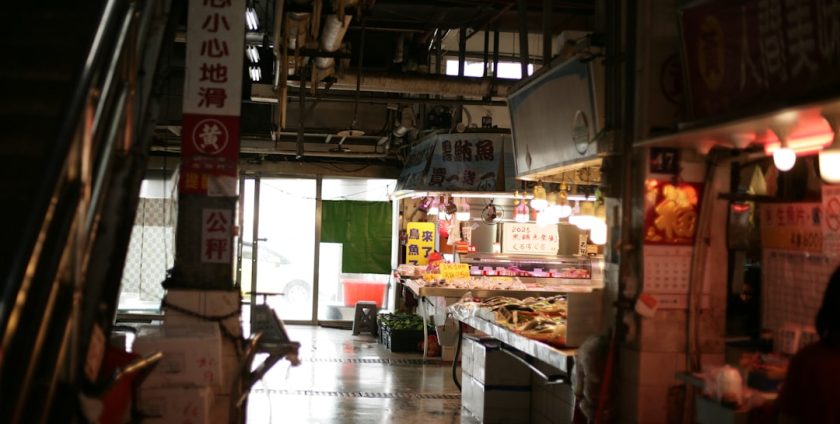
- By: admin
- Category: Commercial Floor Cleaning Machines
- 0 comment
In the realm of food processing, ensuring safety and quality is paramount. The Hazard Analysis and Critical Control Points (HACCP) system has emerged as a cornerstone for maintaining these standards. Designed to identify and mitigate potential hazards throughout the food production process, HACCP is not merely a regulatory requirement; it is a commitment to excellence that can significantly enhance a facility’s reputation and operational efficiency.
For contract cleaners, building managers, and facility managers, understanding HACCP standards is essential, as they play a crucial role in implementing the necessary cleaning protocols that uphold these guidelines. The significance of HACCP extends beyond compliance; it fosters a culture of safety and accountability within food processing facilities. By adhering to these standards, organisations can minimise risks associated with foodborne illnesses, thereby protecting consumers and safeguarding their brand integrity.
This article delves into the critical aspects of floor hygiene within the context of HACCP standards, highlighting its importance, the selection of appropriate flooring materials, effective cleaning protocols, and the need for ongoing training and maintenance. Please feel free to get in touch with us through our Contact Us page.
Summary
- HACCP standards are crucial for ensuring food safety in processing facilities
- Superior floor hygiene is essential for meeting HACCP standards and preventing contamination
- Choosing the right flooring materials is key to maintaining hygiene in food processing facilities
- Effective cleaning and sanitization protocols are necessary for maintaining clean floors in food processing facilities
- Regular inspections, maintenance, and employee training are vital for achieving and maintaining HACCP standards in food processing facilities
Importance of Superior Floor Hygiene in Meeting HACCP Standards
Floor hygiene is often an overlooked aspect of food safety, yet it plays a pivotal role in meeting HACCP standards. Contaminated floors can serve as breeding grounds for pathogens, which can easily transfer to food products through direct contact or via equipment and personnel. In a bustling food processing environment, where raw materials are handled and processed, maintaining superior floor hygiene is not just beneficial; it is essential for compliance with HACCP regulations.
Consider a meat processing facility where raw meat is handled daily. If the floors are not cleaned and sanitised effectively, bacteria such as Salmonella or Listeria can thrive, posing serious health risks. A single lapse in floor hygiene can lead to widespread contamination, resulting in costly recalls and damage to the facility’s reputation.
Therefore, implementing rigorous cleaning protocols that focus on floor hygiene is vital for any food processing operation aiming to meet HACCP standards.
Choosing the Right Flooring Materials for Food Processing Facilities

Selecting the appropriate flooring materials is a critical step in ensuring compliance with HACCP standards. The right flooring not only facilitates easy cleaning but also resists moisture and prevents the growth of harmful microorganisms. Common choices for food processing facilities include vinyl, epoxy resin, and ceramic tiles, each offering unique benefits tailored to specific operational needs.
For instance, epoxy resin flooring is highly regarded for its seamless finish, which eliminates joints where dirt and bacteria can accumulate. This type of flooring is also resistant to chemicals and easy to clean, making it an ideal choice for environments where spills are frequent. On the other hand, vinyl flooring provides excellent slip resistance and comfort underfoot, which can be beneficial in high-traffic areas.
Ultimately, the choice of flooring should be guided by the specific requirements of the facility, including the types of food processed and the cleaning protocols in place.
Implementing Effective Cleaning and Sanitization Protocols for Food Processing Facility Floors
Once the right flooring materials have been selected, the next step is to establish effective cleaning and sanitisation protocols tailored to the unique challenges of food processing environments. A comprehensive cleaning schedule should be developed, detailing daily, weekly, and monthly tasks that ensure floors remain hygienic and compliant with HACCP standards. Daily cleaning might involve sweeping or vacuuming to remove debris followed by mopping with a suitable sanitising solution.
For more intensive cleaning, especially in areas prone to spills or contamination, pressure washing may be employed. Additionally, it is crucial to use cleaning agents that are approved for use in food processing environments to avoid introducing harmful chemicals into the production area. Regular audits of cleaning practices can help identify areas for improvement and ensure that all staff are adhering to established protocols.
Preventing Contamination and Cross-Contamination in Food Processing Facilities
Preventing contamination and cross-contamination is a fundamental principle of HACCP that extends beyond just floor hygiene. In food processing facilities, where various ingredients are handled simultaneously, it is vital to implement strategies that minimise the risk of cross-contamination between raw and cooked products. This includes establishing designated zones for different types of food processing and ensuring that cleaning protocols are strictly followed between these areas.
For example, in a facility that processes both raw vegetables and cooked meals, it is essential to have separate cleaning equipment for each zone. This prevents any residual contaminants from raw products from coming into contact with ready-to-eat items. Additionally, staff should be trained on the importance of personal hygiene practices, such as changing footwear when moving between different processing areas.
By fostering a culture of awareness around contamination risks, facilities can significantly enhance their compliance with HACCP standards.
Regular Inspections and Maintenance for Floor Hygiene in Food Processing Facilities

Regular inspections and maintenance are crucial components of maintaining superior floor hygiene in food processing facilities. Scheduled inspections allow facility managers to identify potential issues before they escalate into significant problems that could compromise food safety. During these inspections, attention should be paid not only to the cleanliness of the floors but also to the condition of the flooring materials themselves.
For instance, if cracks or damage are found in epoxy flooring, this could create areas where bacteria can thrive. Addressing these issues promptly through repairs or resurfacing can prevent contamination risks and ensure ongoing compliance with HACCP standards. Furthermore, maintaining an open line of communication between cleaning staff and management can facilitate timely reporting of any concerns related to floor hygiene or maintenance needs.
Training and Education for Employees on Maintaining Superior Floor Hygiene
Training and education are vital in ensuring that all employees understand their role in maintaining superior floor hygiene within food processing facilities. A well-informed workforce is better equipped to adhere to cleaning protocols and recognise potential hazards that could compromise food safety. Regular training sessions should cover topics such as proper cleaning techniques, the importance of personal hygiene, and how to identify signs of contamination.
Moreover, incorporating hands-on training can enhance learning outcomes by allowing employees to practice cleaning methods in real-world scenarios. For example, demonstrating how to effectively clean different types of flooring materials can help staff understand the nuances involved in maintaining hygiene across various surfaces. By investing in employee training, facilities not only comply with HACCP standards but also foster a culture of safety that prioritises food quality.
Achieving HACCP Standards through Superior Floor Hygiene in Food Processing Facilities
In conclusion, achieving HACCP standards in food processing facilities hinges significantly on superior floor hygiene. From selecting appropriate flooring materials to implementing effective cleaning protocols and providing ongoing training for employees, every aspect plays a crucial role in safeguarding food safety. By prioritising floor hygiene, facilities can mitigate contamination risks, enhance operational efficiency, and ultimately protect their brand reputation.
As the food industry continues to evolve with increasing regulatory scrutiny and consumer awareness regarding food safety, maintaining high standards of cleanliness will remain a top priority for all stakeholders involved. By embracing best practices in floor hygiene, contract cleaners, building managers, and facility managers can contribute significantly to achieving HACCP compliance and ensuring the safety of food products. **FAQ Section** 1.
**What are HACCP standards?**
HACCP stands for Hazard Analysis and Critical Control Points; it is a systematic approach used to identify and manage potential hazards in food production processes. 2. **Why is floor hygiene important in food processing?**
Superior floor hygiene prevents contamination from pathogens that can thrive on dirty surfaces, thereby protecting consumer health and ensuring compliance with HACCP standards.
3. **What flooring materials are best for food processing facilities?**
Commonly recommended materials include epoxy resin for its seamless finish and durability, vinyl for its slip resistance, and ceramic tiles for their ease of cleaning. 4.
**How often should floors be cleaned in a food processing facility?**
Floors should be cleaned daily as part of routine maintenance; however, more intensive cleaning may be required based on specific operational needs or after spills. 5. **What training should employees receive regarding floor hygiene?**
Employees should be trained on proper cleaning techniques, personal hygiene practices, and how to identify potential contamination risks within their work environment.
FAQs
What are HACCP standards?
HACCP stands for Hazard Analysis and Critical Control Points. It is a systematic preventive approach to food safety that addresses physical, chemical, and biological hazards as a means of prevention rather than finished product inspection.
Why is floor hygiene important in food processing facilities?
Floor hygiene is crucial in food processing facilities to prevent contamination of food products. Proper floor hygiene helps to maintain a clean and safe environment, reducing the risk of foodborne illnesses and ensuring compliance with food safety regulations.
How can food processing facilities meet HACCP standards for floor hygiene?
Food processing facilities can meet HACCP standards for floor hygiene by implementing regular cleaning and sanitation protocols, using appropriate flooring materials that are easy to clean and maintain, and ensuring proper drainage to prevent standing water and bacterial growth.
What are some flooring options that meet HACCP standards for food processing facilities?
Flooring options that meet HACCP standards for food processing facilities include epoxy flooring, polyurethane flooring, and resin flooring. These materials are durable, non-porous, and resistant to chemicals, making them ideal for maintaining superior floor hygiene in food processing environments.
How can food processing facilities ensure superior floor hygiene?
Food processing facilities can ensure superior floor hygiene by implementing regular cleaning schedules, using appropriate cleaning and sanitation products, training staff on proper cleaning procedures, and conducting regular inspections to identify and address any potential hygiene issues.
